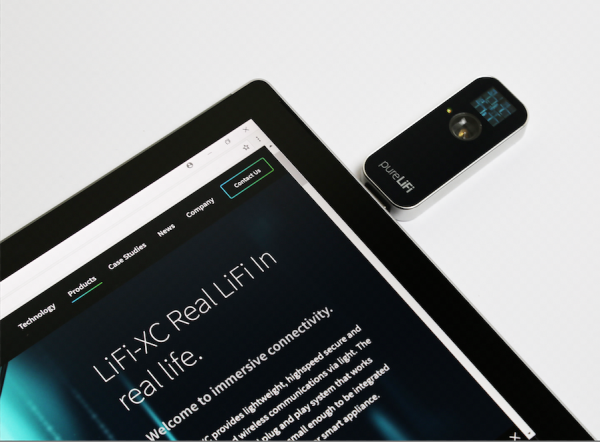15 August 2018

O2's installation at its Slough HQ includes Li-Fi enabled LED lights along with hardware from PureLiFi.
LED light bulbs will be used to provide high-speed wireless connectivity in a new network trial unveiled by O2 today.
The mobile operator says the move is the latest in a series of trials as it paves the way for the launch of its 5G network in the UK.
O2 has installed the LiFi-XC system from PureLiFi at its Slough HQ.
The deployment comprises nine LiFi-enabled LEDs which are capable of sending large amounts of data over the airwaves while appearing as white light to the human eye.
The system enables data to be transceived from the lights at high speeds via adjustments in the bulb’s brightness.
Using light bulbs for super high-speed transmission initially came from research carried out by Harald Haas, professor of mobile communications at Edinburgh University’s School of Engineering/Institute of Digital Communications.
In 2012, Haas co-founded pureLiFi and is currently the company’s chief scientific officer. He is also director of the LiFi Research and Development Centre at the University of Edinburgh.
According to researchers, light spectrum is 10,000 times wider than RF spectrum.
Li-Fi operates in visible light frequencies between 400THz and 800THz. As this is at the higher range of the electromagnetic spectrum, the technology is said to be able to deliver higher capacity throughput of up to 1Gbps.
Li-Fi supporters also claim Li-Fi’s reliance on the visible light spectrum enables safer, more reliable, and more secure wireless data communication than Wi-Fi.
They also believe the system has the potential to reduce infrastructure complexity and energy consumption.
“With the proliferation of internet-of-things devices and continued growth in mobile users, the demand for spectrum is under increasing pressure,” says Alistair Banham, CEO, pureLiFi.
“Li-Fi is capable of unlocking unprecedented and much-needed data and bandwidth.”
Over the last six years, PureLiFi has released various iterations of its system.
These include the world’s first Li-Fi dongle, as well as an Li-Fi integrated luminaire developed in partnership with French lighting manufacturer Lucibel.
Since launching in 2012, Pure LiFi has released various iterations of its Li-Fi system, including the world’s first Li-Fi dongle.
Towards the end of 2016, Singapore’s Infocomm Media Development Authority (IMDA) opened up spectrum for Li-Fi trials.
The country’s Minister for Communications and Information Dr. Yaacob Ibrahim said the IMDA will facilitate joint-industry Li-Fi trials by removing some of the regulatory barriers, and waive all frequency fees for technical Li-Fi trials to encourage interested companies to conduct assessments.
Speaking at the time, pureLiFi said it planned to bring its products to the Singaporean market throughout 2017.
The company had also received financial backing from local investment firm Temasek.










